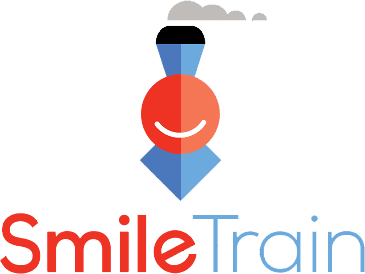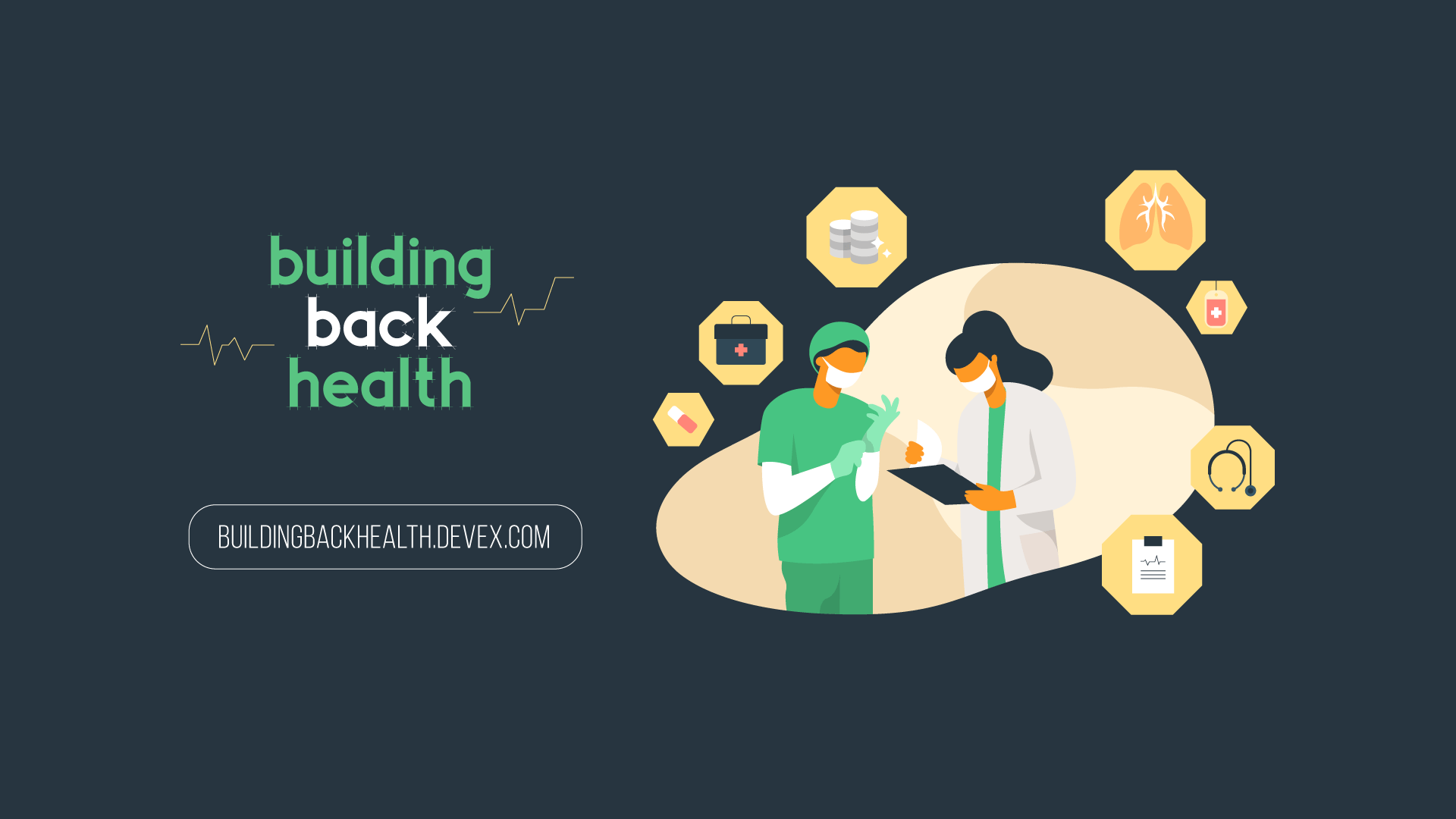
Shweta Sharma, 37, a school teacher in India’s Bengaluru city, remembers an incident from seven years ago. Her daughter Aishwarya, then 4, was attempting to blow soap bubbles but no iridescent spheres escaped from the blower. The child broke down. She wept, wondering why a task easy enough for her peers was impossible for her. Aishwarya was inconsolable that day, her mother recalls, eyes welling up at the memory.
Aishwarya Sharma, now 11, was born with a cleft lip and palate, a condition resulting in a split in the upper lip and roof of the mouth. One in 500 children in Asia, and 1 in 700 globally, are born with this deformity. In India, that’s an estimated 35,000 cases a year.
Aishwarya, like many other children, underwent reconstruction surgeries as an infant. But experts point out surgeries aren’t the end of medical intervention for cleft patients. Surgeries alone don’t ensure rehabilitation, and reliance on them has failed to ensure that children born with cleft lips and palates are integrated into society.
The impact of this condition isn’t limited to something as benign as the inability to blow soap bubbles. Such children can’t be breastfed and have difficulties swallowing, resulting in malnourishment. They have severe speech impairments, and face stigma that affects their mental well-being. Advancements in comprehensive cleft care include not just critical surgical interventions but also a range of non-surgical care starting from birth of the child lasting until adulthood.
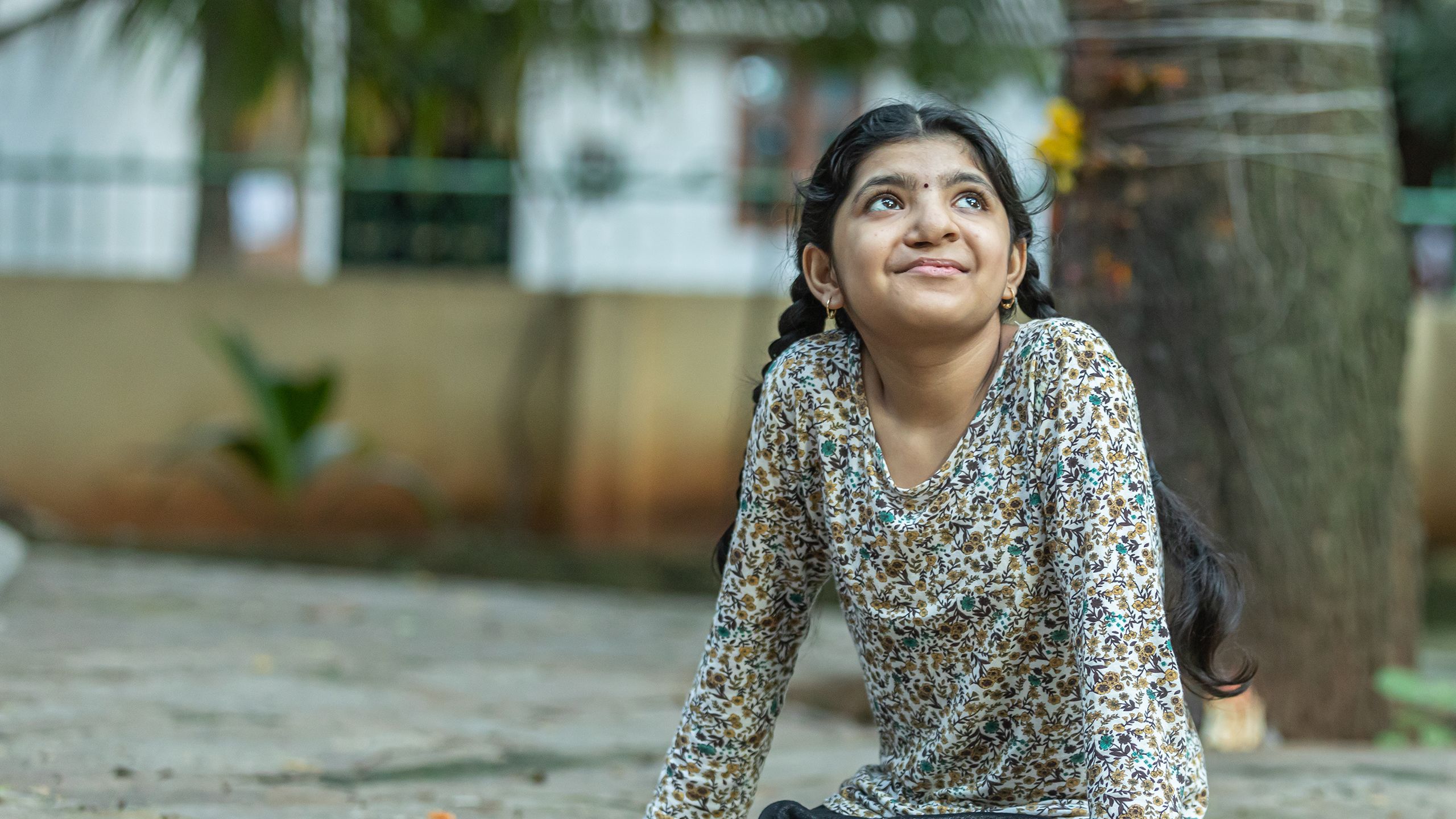
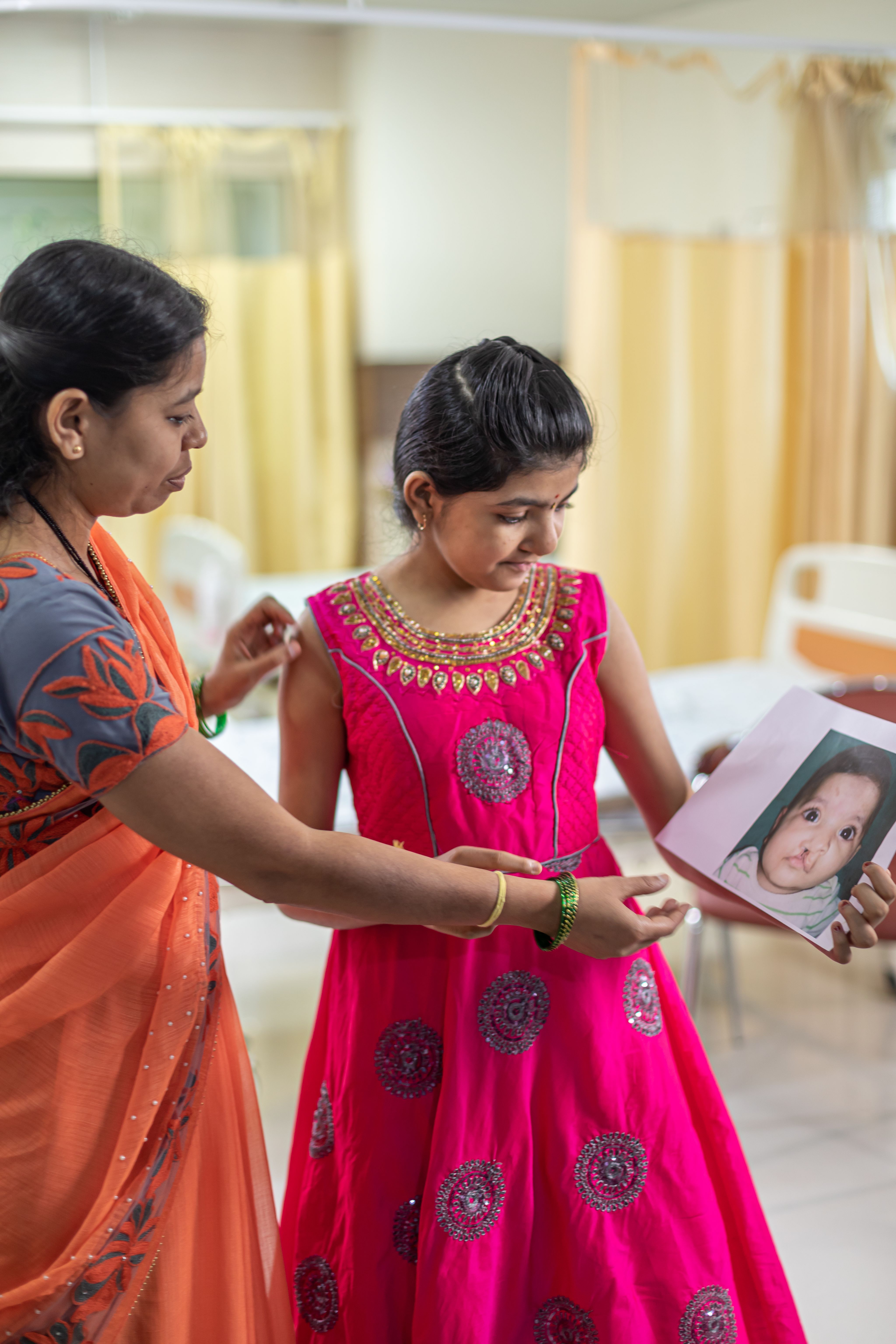
Aishwarya Sharma, now 11, was born with a cleft lip and palate.
Aishwarya Sharma, now 11, was born with a cleft lip and palate.
“Comprehensive cleft care has seen a gradual evolution,” says Dr. Krishnamurthy Bonanthaya, maxillofacial surgeon at the Bhagwan Mahaveer Jain Hospital. He is the project director of Smile Train in India and heads the country’s first Cleft Leadership Centre.
Comprehensive cleft care ensures that facial surgeries and orthodontic procedures, performed at various ages depending on the severity of the cleft, are complemented with other specialities that fulfill other needs of the patient. This includes genetics, pediatrics, speech therapy, nutritional counseling, and psychological services.

Aishwarya Sharma, now 11, was born with a cleft lip and palate.
Apart from a range of specialties covering patient care, the CLC has two other objectives. The team furthers knowledge about comprehensive cleft care by producing research and training a new generation of health professionals. Smile Train at BMJH has produced over 40 research papers in international journals, and three textbooks.
During the pandemic, the CLC started online speech therapy, facilitated uninterrupted cleft care for patients, and continued to guide their peers virtually. With 130 partner hospitals across India, Smile Train has performed nearly 642,500 surgeries in a 20-year period.
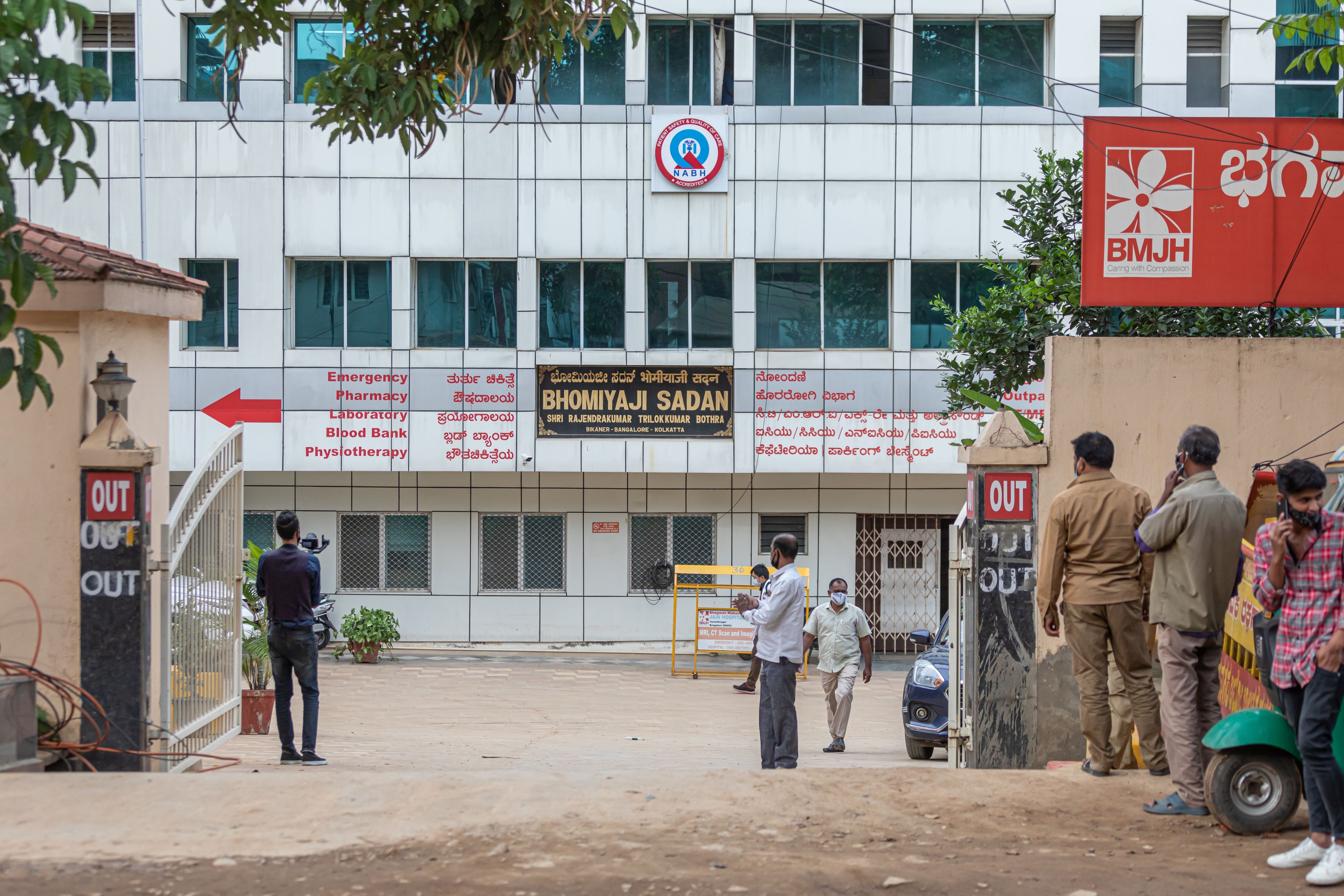
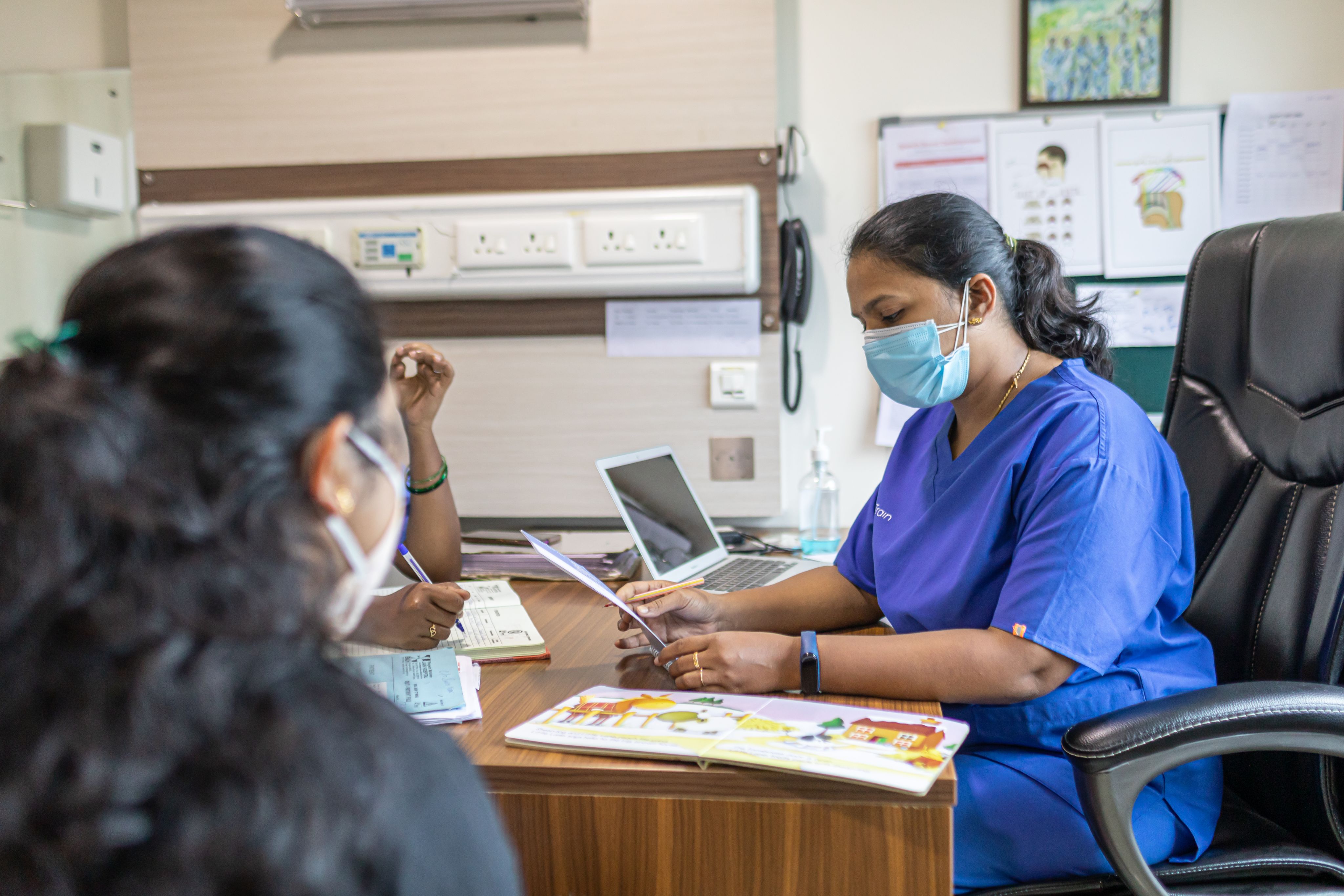
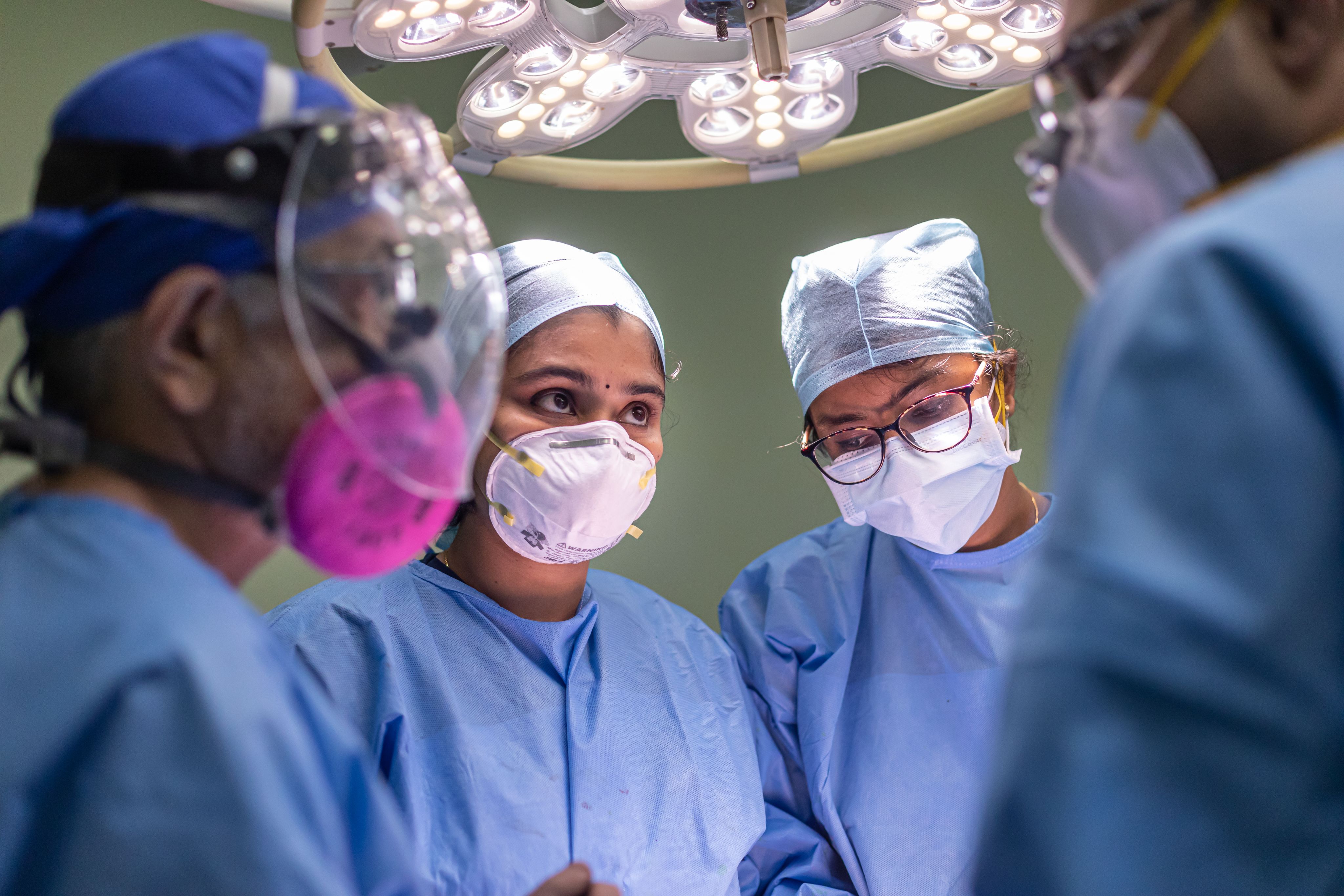

India's first Cleft Leadership Center is located at the Bhagwan Mahaveer Jain Hospital in Bengaluru, India.
India's first Cleft Leadership Center is located at the Bhagwan Mahaveer Jain Hospital in Bengaluru, India.

Speech therapist Aparna V.S., part of BMJH's multidisciplinary cleft care team, has a consultation with a patient.
Speech therapist Aparna V.S., part of BMJH's multidisciplinary cleft care team, has a consultation with a patient.

Surgery is just one of the interventions necessary to ensure that children born with cleft lips and palates are integrated into society.
Surgery is just one of the interventions necessary to ensure that children born with cleft lips and palates are integrated into society.
A time before comprehensive care

When Bonanthaya started out, for several years, doctors just performed surgeries to clear the backlog. He has been part of teams that have conducted over 13,000 cleft surgeries, including four surgeries on Aishwarya.

Over the years, Smile Train has supported over 650,000 surgeries in India.
“This problem was humongous to start off with,” Bonanthaya explains.
At the turn of the century, when Smile Train started in India, the country had an estimated backlog of more than 1 million untreated cleft cases. Over the years, the organization has supported over 650,000 surgeries in India. As of 2016, studies show over 72,000 children and adults with clefts still live without treatment, although experts say the actual number could be much higher — it has been a challenge to estimate the number of children with untreated clefts in India as there is no birth registry for clefts.

Over the years, Smile Train has supported over 650,000 surgeries in India.
Over the years, Smile Train has supported over 650,000 surgeries in India.
“It is important for the parents to know that this problem can be solved, with no issues left behind. Their child can be as normal as any other child, that is something that we strive for and achieve.”
— Dr. Krishnamurthy Bonanthaya, maxillofacial surgeon, Bhagwan Mahaveer Jain Hospital
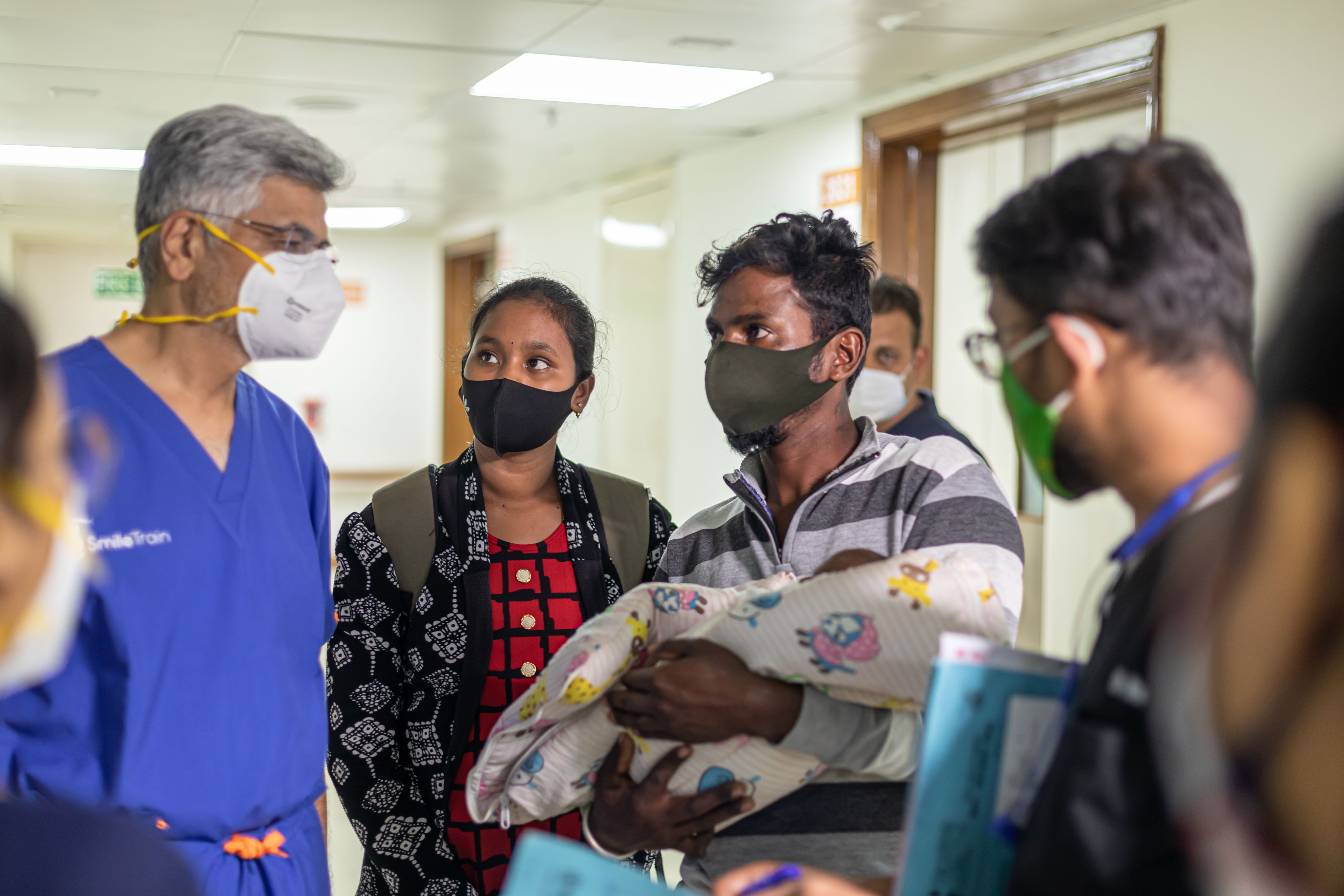
Shibasis Biswas, surgical fellow at the Smile Train CLC is from the mining town of Dhanbad in eastern India’s Jharkhand. The cleft burden in such areas is high, primarily because of poor health care facilities. Even today, adults with clefts live without any surgical intervention, he says. Many are unaware that it is curable.
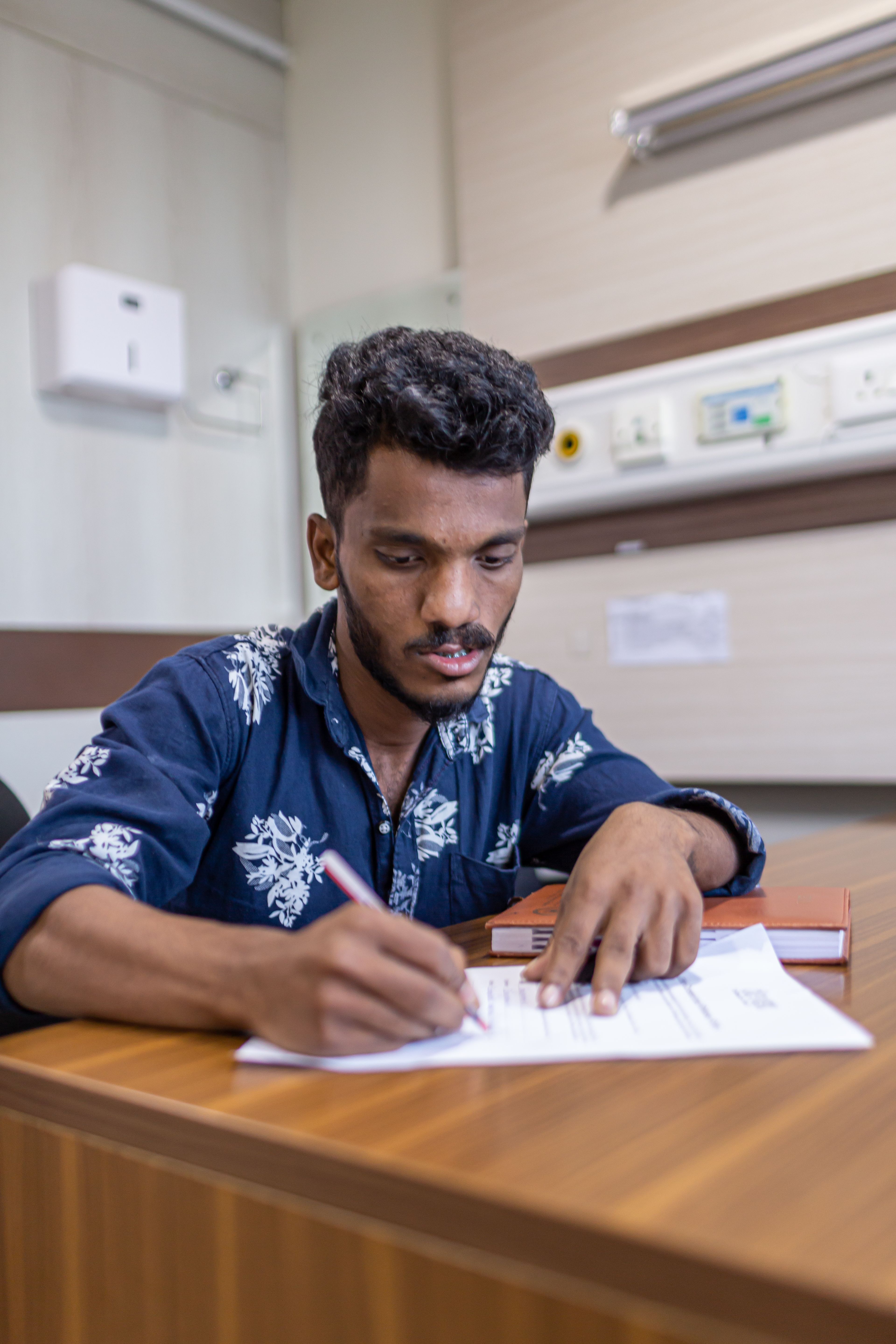
Vinay Kumar, 21, didn't undergo palate surgery until he was five-years-old.
“Most patients come from poor socioeconomic backgrounds, and don’t have enough information,” observes Dr. Renu Parmar, orthodontist at Smile Train in BMJH.
Vinay Kumar, 21, was raised by a single parent in Karnataka’s Madikeri district, 170 miles from Bengaluru. His mother, a daily wage laborer, brought him to Smile Train when he was five. She would take off from work for his weekly consultations. Kumar underwent a palate surgery when he was five-years-old. Such delays were common when Smile Train started operations in India.
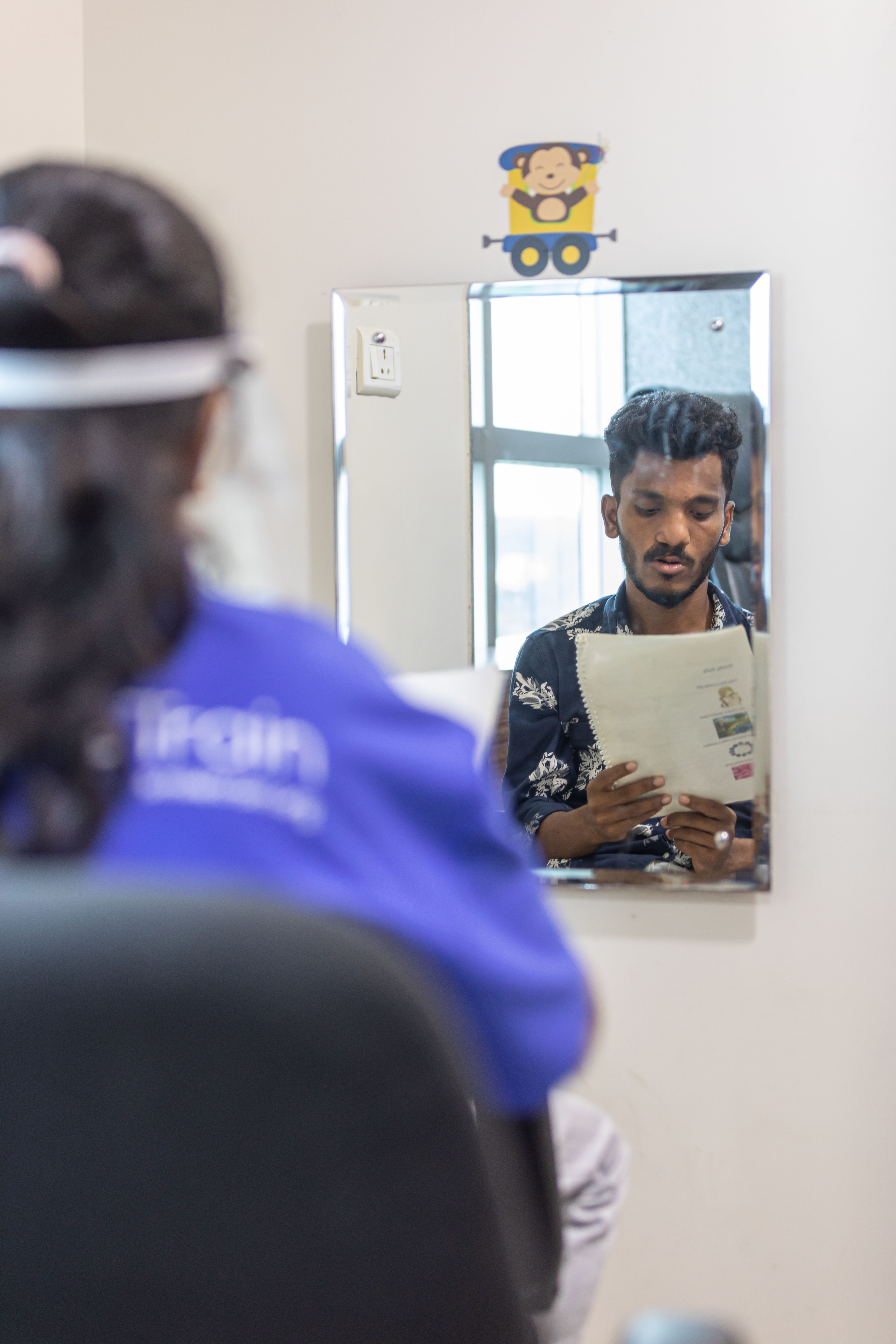
Kumar had internalized some errors in speech and now receives speech therapy at BMJH.
According to Bonanthaya, when they started Smile Train, the average age of the first surgery was 11 years. “These surgeries should have been done in the first year of the patient’s life,” he explains. Over years, came the realization that surgeries alone didn’t meet the needs of the patients.

Vinay Kumar, 21, didn't undergo palate surgery until he was five-years-old.
Vinay Kumar, 21, didn't undergo palate surgery until he was five-years-old.

Kumar had internalized some errors in speech and now receives speech therapy at BMJH.
Kumar had internalized some errors in speech and now receives speech therapy at BMJH.
Comprehensive care starts early

Shweta Sharma was shocked when she was first told of Aishwarya’s condition. “I was still in the operating theatre [after Cesarean section] when the doctor told us the baby has a cleft palate. I didn’t know anything about what this meant,” she recalls.
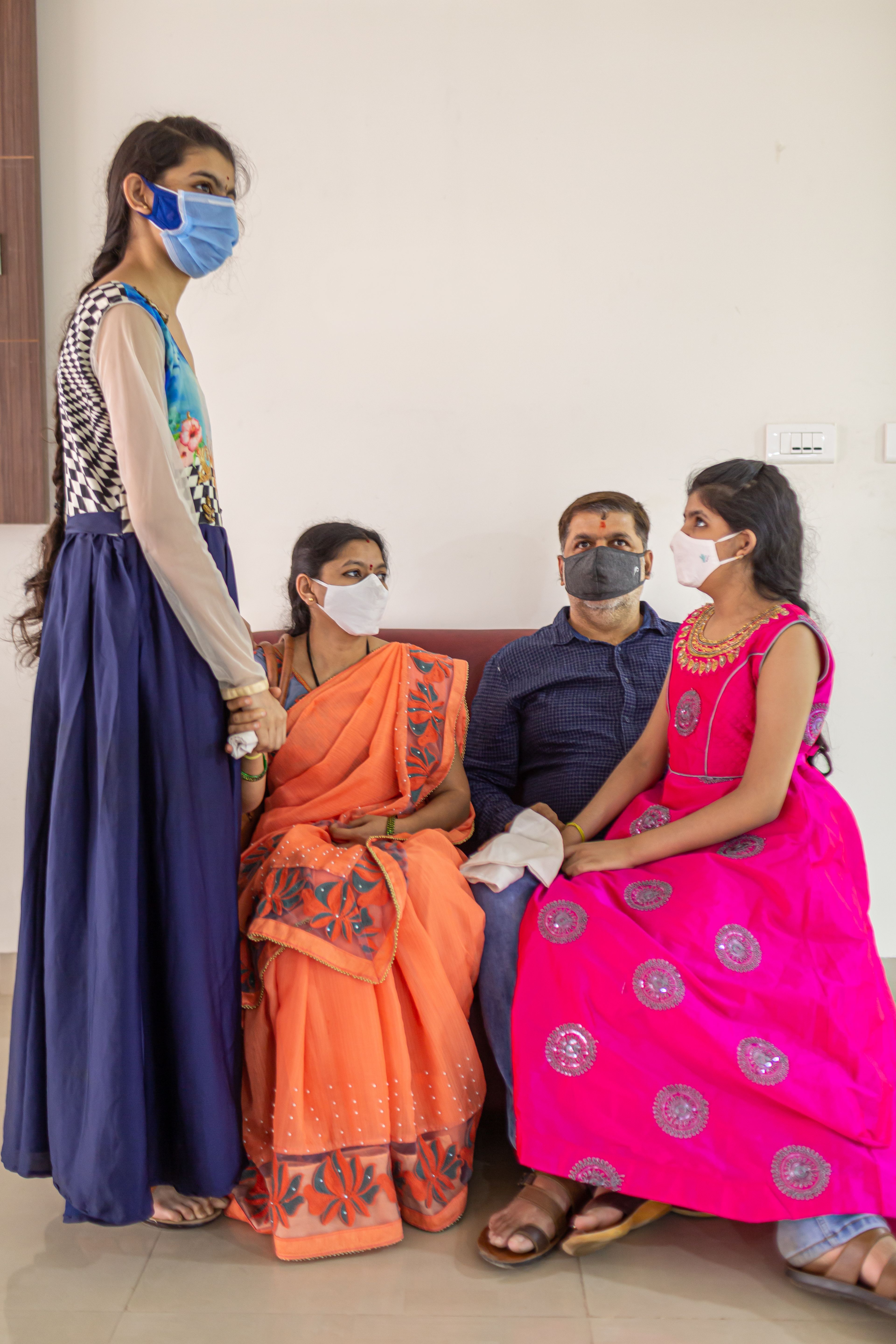
Aishwarya Sharma and her family wait to be seen for a consultation at BMJH.
Today, antenatal diagnosis through anomaly scans can reduce the shock and anxiety parents feel, Bonanthaya says. It helps with preparing parents to handle the condition and ensures that the baby gets critical care post-delivery. The number of parents coming for antenatal consultation is increasing over the years, he adds.
The first few days after birth are defining, says Parmar. When parents are caught unaware, they take longer to adapt to the babies’ needs.

Aishwarya Sharma and her family wait to be seen for a consultation at BMJH.
Aishwarya Sharma and her family wait to be seen for a consultation at BMJH.
Apart from nourishment, a key aspect of early intervention, she adds, is starting pre-surgical interventions such as nasoalveolar molding, or NAM.
Here, orthodontists use a dental retainer-like plastic plate to non-surgically reshape gums, lip and nostrils before an infant has a cleft lip and palate surgery.“NAM can reduce the severity and initial deformity,” Parmar says. Surgical outcomes are better after NAM, and the child may need fewer surgeries in years to come.
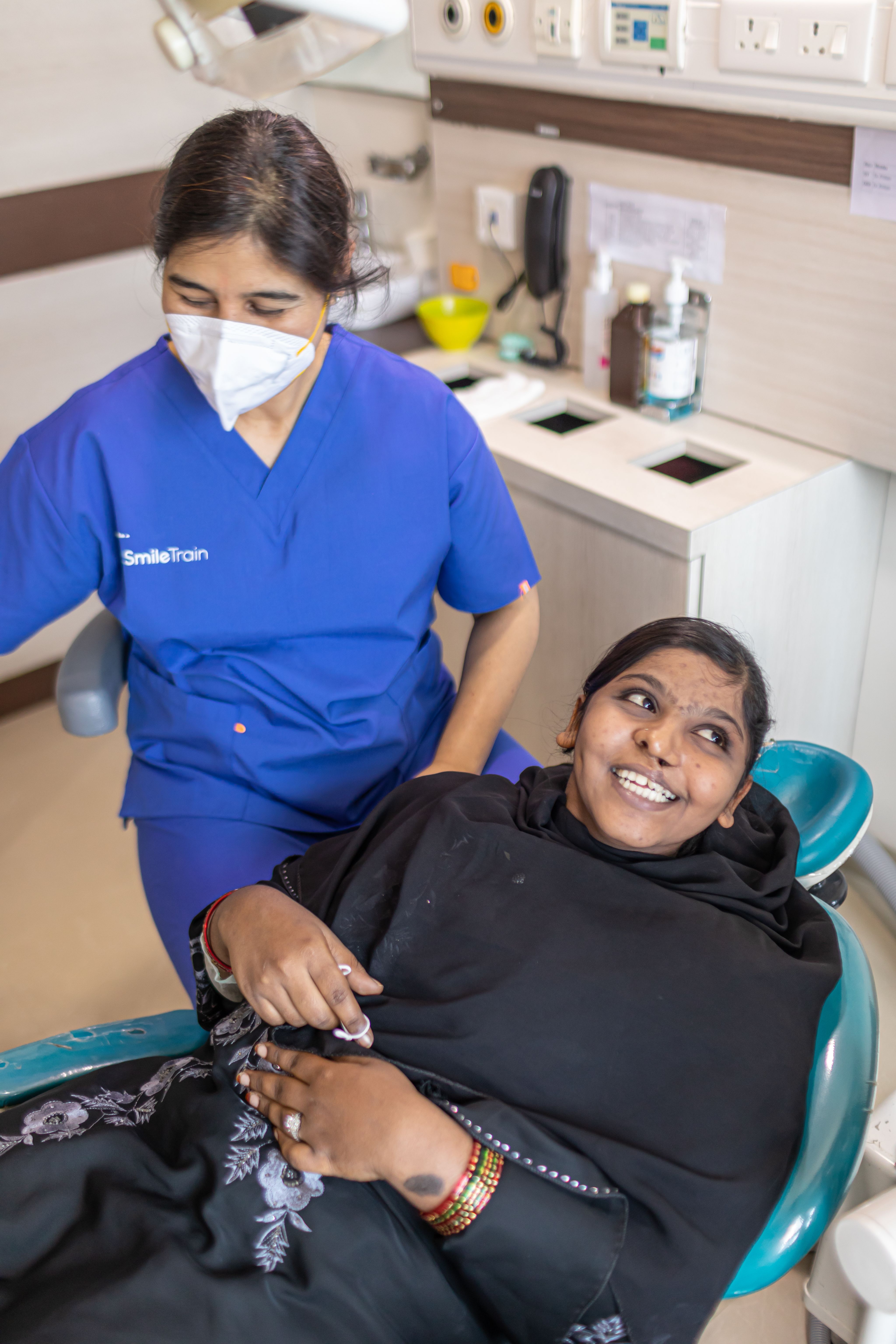
Orthodontist Renu Parmar tends to a patient at BMJH.
Biswas has found that in poorer states the public health infrastructure is inadequate to support the child. “There may not be an intensive care unit to get child support, if needed,” he says. This can cause delays in referrals and lead to the deteriorating health of an infant.
Aishwarya was two-months-old when she was referred to Smile Train, she was underweight and undernourished. She didn’t get the NAM. But when she turned six-months-old, she was healthy enough to be operated on, and doctors performed a lip reconstruction surgery.
Aishwarya’s father Nagaraj Sharma, who is a caterer, describes his relief after the procedure. “It was only after her lip surgery that we named her. Until then she was called ‘Baby of Shweta’,” he recalls.
But that was just the beginning of Aishwarya’s cleft care.

Orthodontist Renu Parmar tends to a patient at BMJH.
Orthodontist Renu Parmar tends to a patient at BMJH.
Other components

After the pre-surgical interventions and the lip surgery, a child with a cleft palate undergoes palate reconstruction surgery between 9 and 12 months. Just after seven years of age, a bone grafting surgery is performed. Post-puberty, between 13 and 18 years, once the jaw and face is fully formed the patient will undergo an orthognathic procedure.
“As the child grows up, it is possible that the upper jaw does not grow fully well,” Bonanthaya explains. So for some children, the upper jaw is smaller and misaligned.
Finally, a rhinoplasty is performed to correct the structure of the nose. “Occasionally, the deformity of the nose may be quite significant and can cause functional as well as psychological issues,” Bonanthaya says.
Aishwarya underwent two palate reconstruction surgeries, one at 12 months and another at seven years. At eight, she underwent a bone grafting procedure. Through all these years, the Sharmas have kept in constant touch with the team of doctors.
Studies show attrition rates among cleft patients are high, resulting in incomplete care.
Hence, follow-ups are crucial to monitor the growth of the child as it helps doctors identify any issues that may surface, Bonanthaya says. For instance, regular follow-ups can help determine if the child needs to go for intensive speech therapy.

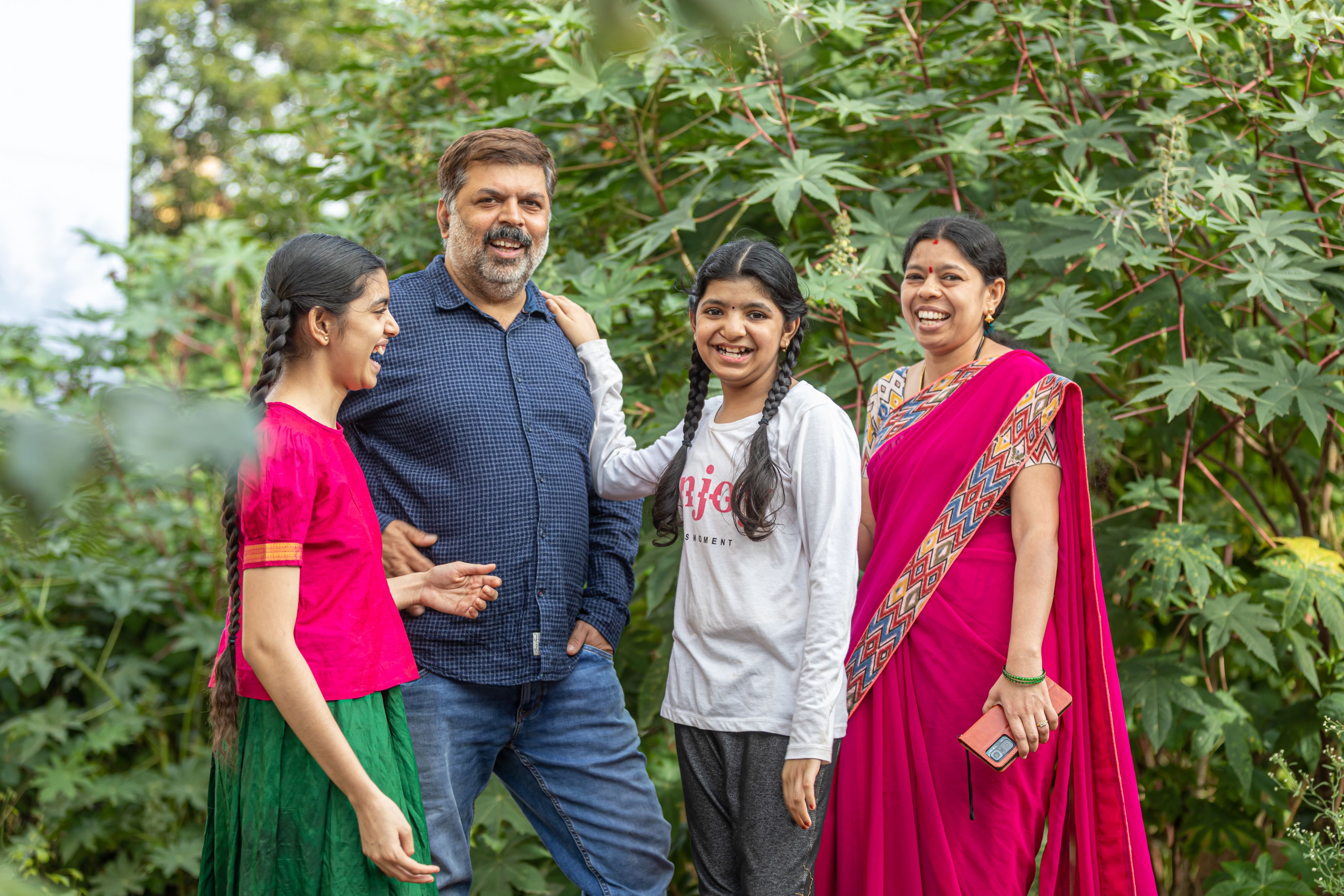


Aishwarya Sharma prays at her local temple in Bengaluru with her sister Siri.
Aishwarya Sharma prays at her local temple in Bengaluru with her sister Siri.

Aishwarya's mother and father, Shweta and Nagaraj, brought her to BMJH when she was two-months-old.
Aishwarya's mother and father, Shweta and Nagaraj, brought her to BMJH when she was two-months-old.

When she turned six-months-old, she was healthy enough to be operated on, and doctors performed a lip reconstruction surgery.
When she turned six-months-old, she was healthy enough to be operated on, and doctors performed a lip reconstruction surgery.
Speech therapy and teleconsultations

Aishwarya Sharma and Vinay Kumar have undergone several years of speech therapy, which is critical in enabling their inclusion in education and the workforce.
“I start seeing them as early as 8 months of age, sometimes before the palate surgery itself,” explains Aparna VS, a speech therapist at BMJH. Parents are counseled on post-surgery expectations and trained on methods for improving the baby's language and cognitive skills.
Patients like Kumar, whose cleft care was delayed, had internalized some errors in speech.
In such cases, there is significant unlearning and relearning, says Aparna.
“It all boils down to the patient’s motivation,” she explains. Therapies for such patients may last well into adulthood.
Despite Kumar’s dedication, the pandemic threatened to interrupt his progress in speech therapy. He wasn’t able to come to the BMJH for the sessions because of the lockdown. To ensure patients don’t drop out, the CLC started experimenting with tele-therapy through messaging and video calling apps like WhatsApp.
The constraints of the pandemic became an opportunity for Smile Train to start teleconsultations, Aparna says.
“I took multiple weekly online speech sessions during the pandemic,” says Kumar, who is studying to be a paramedic. He no longer has to make the arduous six hour journey; and his in-person visits to BMJH are limited to consultations with the surgeons and orthodontists.

16-year-old Rahul Gowda has undergone five surgeries on his cleft lip and palate.
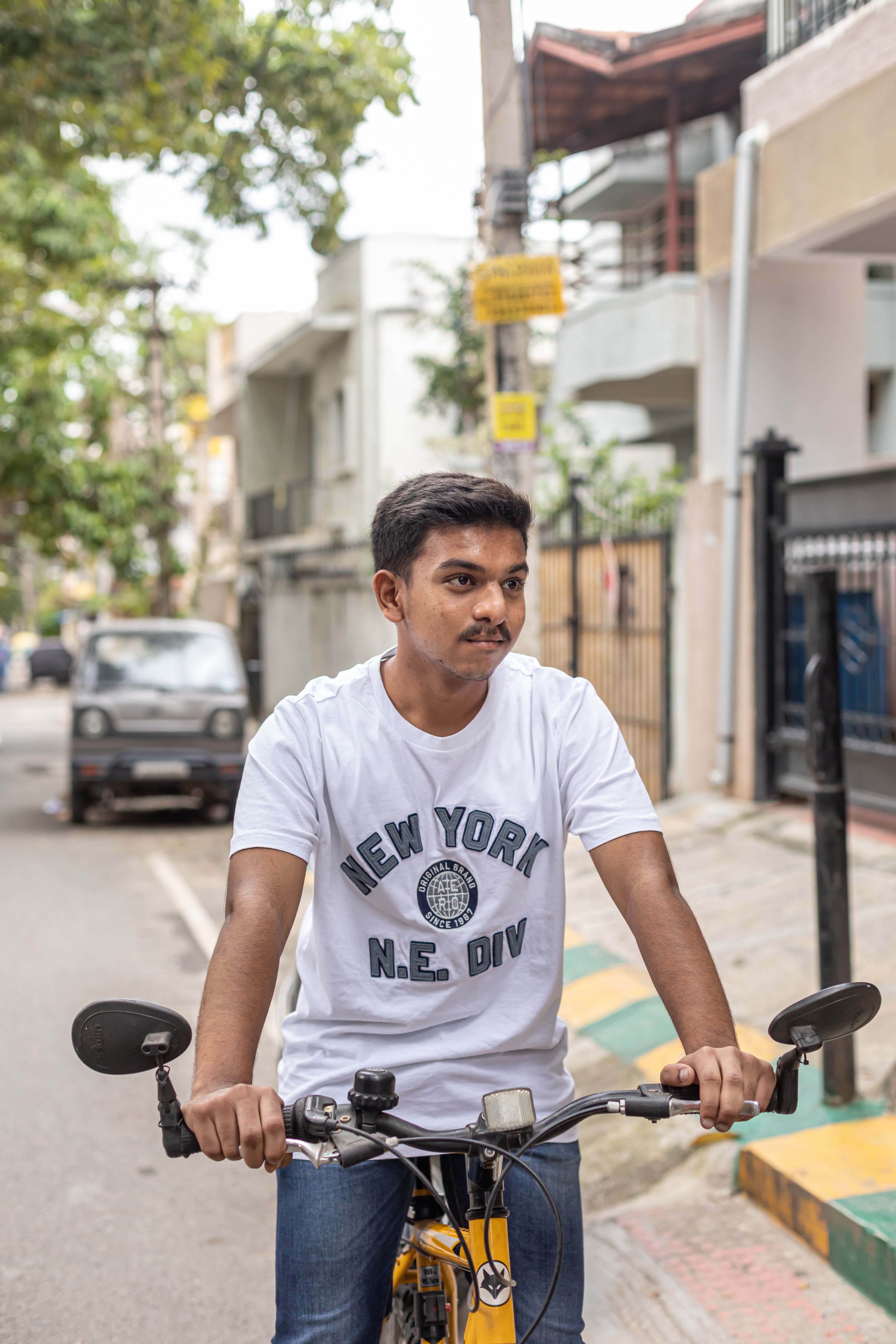
A high school student, he dreams of entering a career in the civil service.

Rahul continues to receive check-ups and speech therapy sessions at the cleft center at BMJH.

16-year-old Rahul Gowda has undergone five surgeries on his cleft lip and palate.
16-year-old Rahul Gowda has undergone five surgeries on his cleft lip and palate.

A high school student, he dreams of entering a career in the civil service.
A high school student, he dreams of entering a career in the civil service.

Rahul continues to receive check-ups and speech therapy sessions at the cleft center at BMJH.
Rahul continues to receive check-ups and speech therapy sessions at the cleft center at BMJH.
Future of cleft care

The CLC’s training and capacity building extends in other areas as well.
From specialists such as pediatric anesthesiologists to surgeons, pulling off comprehensive care requires a multidisciplinary team. “Every cog is important,” Bonanthaya says.
Over 25 surgical fellows have been trained in the last two decades. Biswas, the current surgical fellow, has been observing all components of comprehensive cleft care, and is keen to start a centre in states such as Jharkhand.
The young maxillofacial surgeon echoes Bonanthaya when he describes what kind of set up he would like to build. “This is not a single man's job,” he says. “I would not like to focus on just surgery. [Patient care] starts from the beginning, from day one when the child is born.”
As Bonanthaya says: “It is important for the parents to know that this problem can be solved, with no issues left behind. Their child can be as normal as any other child, that is something that we strive for and achieve.”
The Sharmas know this first hand. Today, Aishwarya is training to be a carnatic singer, speaks fluently in English and Kannada, and blows as many soap bubbles as she wants.
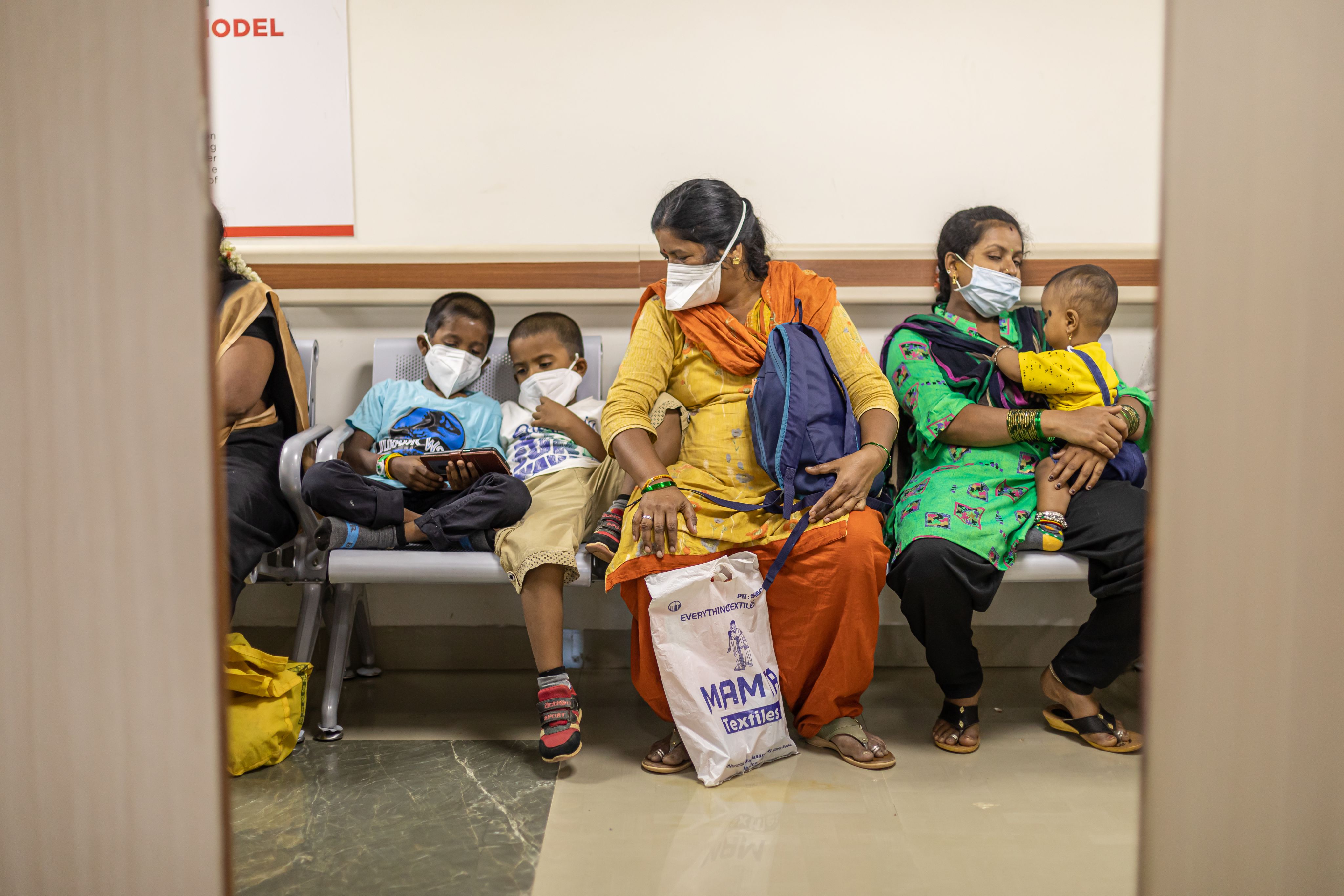
Credits:
Reporting: Mahima Jain
Photos: Gareth Hoover
Video: Julian N'Galli-Marsala
Story editor: Amruta Byatnal
Copy editor: Phoenix Beronio
Production coordinator/multimedia producer: Naomi Mihara
Video editing: Alex Campbell

Produced in partnership with
This visual story is part of Devex's Building Back Health series, exploring how we can build back health systems that are more effective, equitable, and preventive.
Get the latest news from this content series in the daily must-read global development newsletter.



